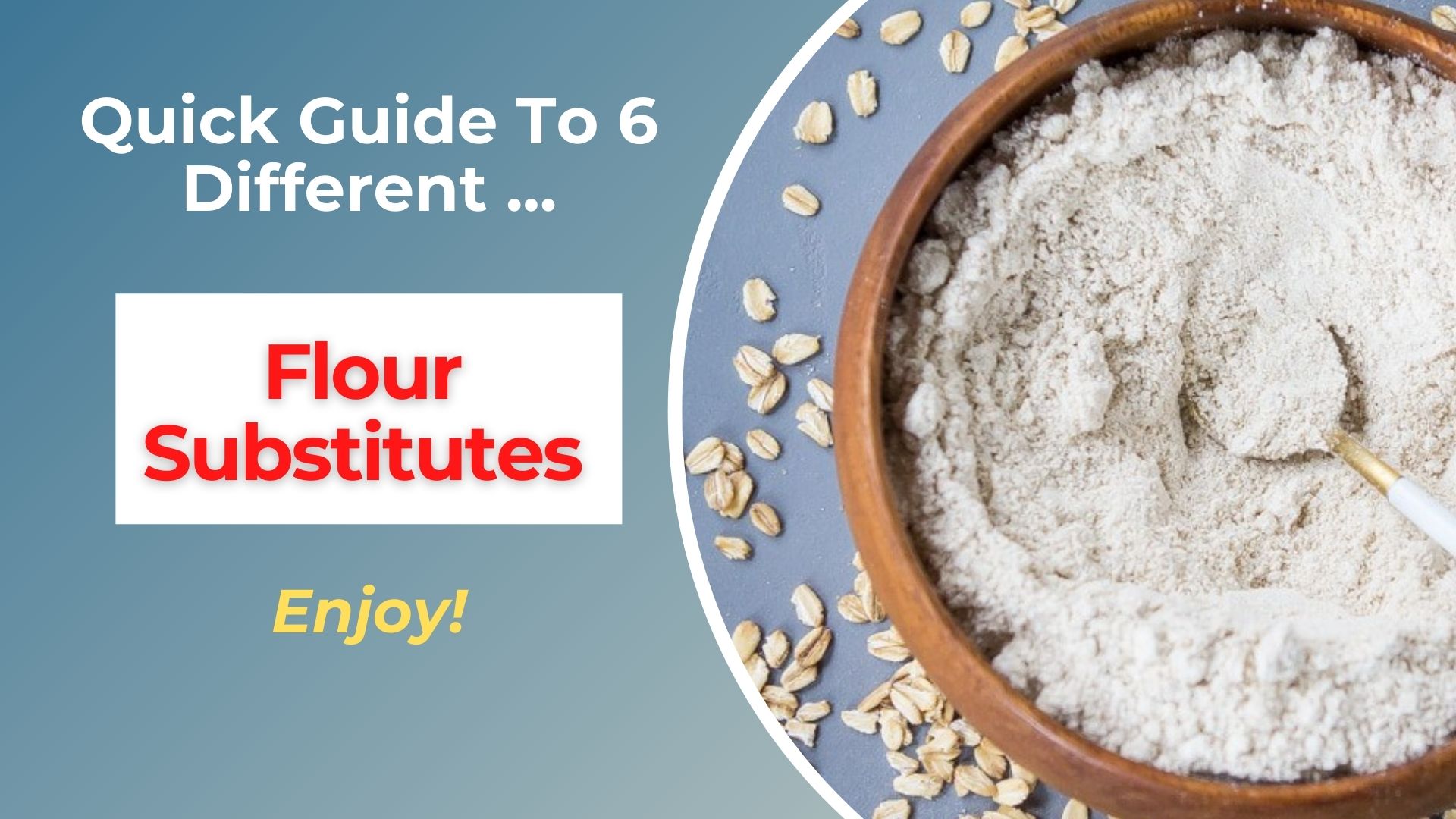Flour has become a staple ingredient in our daily lives. From bread to pizza dough, we rely on it to make a range of delicious foods. Unfortunately, flour isn’t always the healthiest or most nutritional option.
While wheat flour is usually seen as the norm, other types of flour exist too. Flour can be made from wheat, corn, rice, oats, barley, rye, spelt, millet, buckwheat, quinoa, and other grains.
Flours are often fortified with vitamins and minerals including iron, calcium, zinc, magnesium, potassium, and fiber.
Each flour has its own characteristics, which means that some are better suited for certain recipes and uses than others. For example, gluten-free flours lack the structure of regular flours. This means baked goods made with these flours tend to crumble easily.
This is a guide to flour alternatives, and how to use each flour substitute appropriately.
1 – Corn Flour

Traditionally seen in cornbread and pancakes, corn flour can be a great substitute for wheat flour. Or if you want a high fiber alternative with plenty of antioxidants. Use corn flour as a coating when you are frying, to thicken soups, and other sauces.
It is relatively shelf stable, and can be stored for up to one year in an airtight container. You could also make corn flour by finely grinding dried corn kernels for a more natural flavor.
2 – Almond Flour

Another substitute for wheat flour that you can easily make yourself to save a little money is almond flour. If you have a powerful blender, you could add almonds to create almond flour.
This is a slightly sweet flour that has an enormous amount of uses in cooking. Use almond flour for a nutty tasting curry or stew, and use it in baking for a gluten-free substitute. Pancakes, cookies, macarons, and biscuits can be made using almond flour as a substitute.
Because it has been made from almonds, this alternative to wheat flour is high in antioxidants and vitamin E. Almond flour is also a great source of magnesium, which the body needs to function properly.
3 – Oat Flour

With more protein and fiber than all-purpose flour, oat flour is another great choice for gluten-free cooking. It is lower in carbs, and can also have anti-nflammatory effects on the body. This is one of the easiest flour substitutes to make from home, as oats are easy to grind up and create your own oat flour free from additives.
In cooking, oat flour can directly replace regular flour, which makes it one of the most versatile flours. For a healthier, gluten-free alternative, use oat flour in your baking. It can easily be made into pancakes, muffins, and crumbles.
4 – Rice Flour

Made from ground up rice grains, rice flour can be used to make noodles, thicken soups, and act as a gluten-free alternative to all-purpose flour in cakes. This is an ideal substitute in many recipes, but it cannot be used in yeasted recipes because it is gluten-free and will not respond correctly.
5 – Quinoa Flour

For those who are more concerned about their health and who are looking for a healthier alternative to wheat flour, quinoa flour has a range of benefits. It has anti-inflammatory properties which are great for avoiding illness and harmful diseases.
Quinoa can also be an ideal choice for weight loss. This is because it helps boost the metabolism naturally, which makes you feel fuller for longer. Quinoa flour is usually used with other types of flour in cooking for a well-rounded flavor, but it works great in thickening soups, sauces, and stews as well as pizza dough and muffins.
6 – Coconut Flour

Another alternative to regular flour which helps with metabolism health is coconut flour. This is because of its high fiber content, which promotes digestion and gut health.
It is widely considered a superfood, and it isn’t hard to see why. Coconut flour can be a great replacement for all-purpose flour in gluten-free baking and cooking.
Summary
There are so many choices nowadays for alternatives to regular wheat flour, that it can be overwhelming to decide what would be the best fit. It is generally recommended that you try a few different types out to see what would work best for your intended use.
Whether you want a flour that you can make yourself, or if you are looking for a lower carb alternative to all-purpose flour in cooking and baking, there are a range of options worth comparing.
Now that we’ve covered flour alternatives, you might be craving bread. But what if you’ve been struggling with bread cravings for a long time, even before you read this post?



